The Asparagaceae group seven families that were previously considered separate, comprising 114 varied genera and about 2900 species distributed throughout the world. Like the Amaryllidaceae, botanists classified the species that are now part of the Asparagaceae in the Liliaceae until 2003. Among the plant names of the family Asparagaceae are a great diversity of species of economic and ecological importance.
General characteristics of the family Asparagaceae
Diversity and morphology
Although genetically related, defining physical characteristics across the entire family is challenging. A diverse family, most members are herbaceous perennials.
Leaves and growth structure
They have long, simple leaves with parallel veins. These leaves form tight rosettes at the base of the plant or at the end of the stem. Many are geophytes, rooting from bulbs or corms.
Flowers and reproduction
The flowers are bright and look like lilies. They have equal sepals and petals, which people also call tepals. The plant arranges the stamens in groups of three.
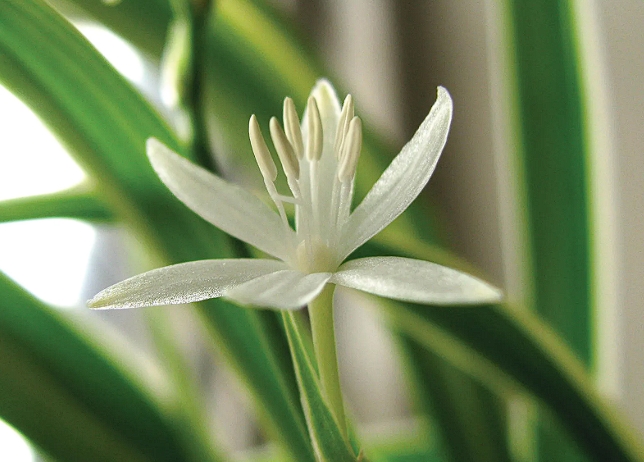
The ovaries are of the superior type and generally have three compartments, which, when mature, transform into dry capsules. This family contains a black pigment called phytomelanin. It helps form deep black seed coats.
Economic and horticultural importance
Many interesting plants belong to this family. They have important economic, gardening, and cultural value. Among the best known members of this family for their nutritional value are asparagus, agave, and cassava. Hostas, hyacinths, muscari, Solomon’s seal (Polygonatum), and snake plants (Sansevieria) are common indoor and outdoor horticultural specimens.
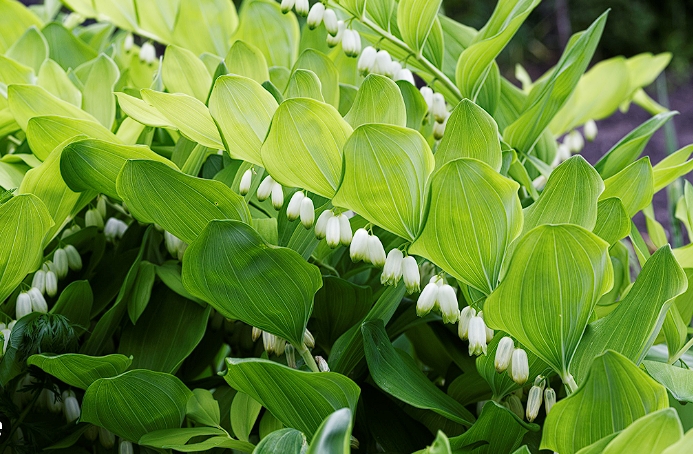
Ecological relevance in the Willamette Valley.
In the wetland prairies of Willamette Valley, plants from the Asparagaceae family are crucially important. They have greatly influenced the area’s natural history.
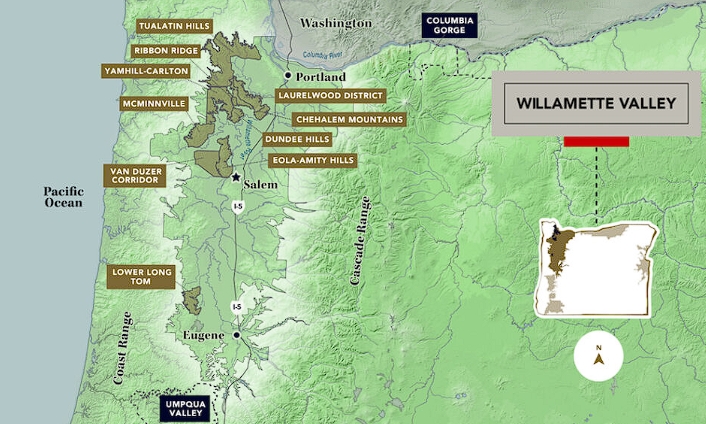
Wetland prairies contain four main genera: Brodiaea, Camassia, Dichlostemma, and Triteleia. All four produce starchy, nutritious bulbs and corms. These were an important part of Native American diets in the Pacific Northwest.
Traditional use by the Kalyapua
Camas bulbs were an important food for the Kalyapua. They worked the land to favor their growth.
Names of plants of the family Asparagaceae (Most important list)
Brodiaea elegans ssp. elegans – Elegant Cluster Lily (Harvest Brodiaea)
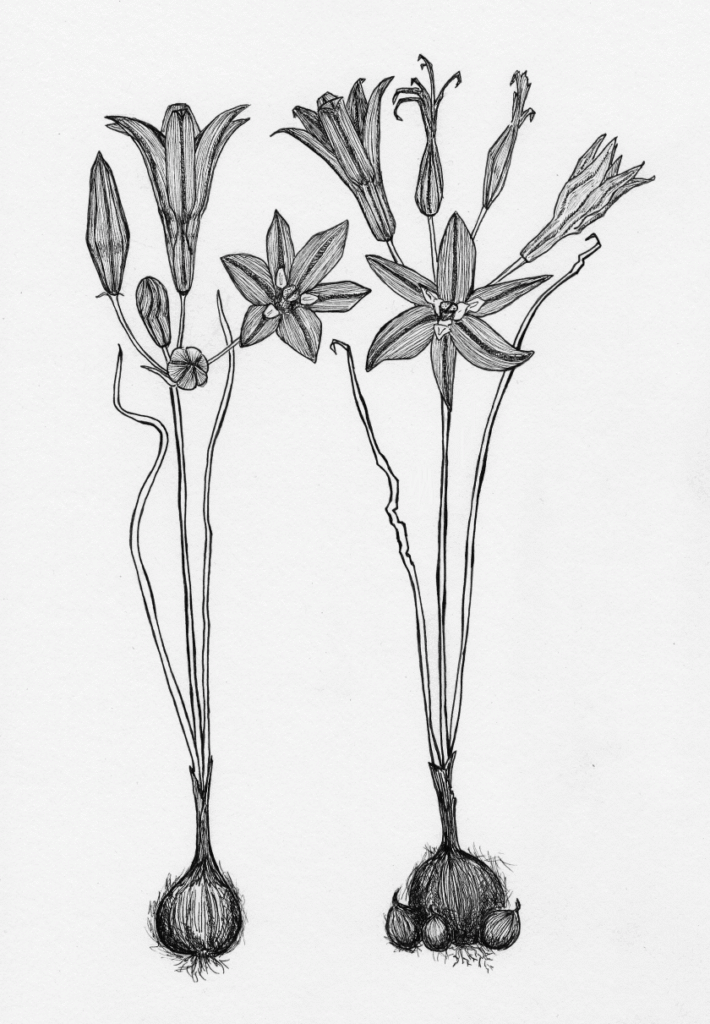
- Species Code: BREL
- Habit: Showy perennial monocot growing from a round, scaly corm 2 centimetres across.
- Leaves: 3 to 5 basal, grass-like leaves with parallel veins. Leaves senesce before flowers appear.
- Stems: No true stems. Instead, the plant has smooth, round scapes ranging from 5 to 25 centimetres tall leading to inflorescence.
- Flowers: 3 to 11 bell shaped flowers on a loose, umbel-like inflorescence. Dark to pinkish purple flowers have six curved sepals and petals atop 5 to 10 cm long.
- Pedicles. The centre of the corolla has three white, flattened, pointed staminode that are about a centimetre in length. In this whorl there are three stamens, accompanied by a lower ovary and a single style.
- Fruits: Forms an oval capsule filled with small, egg-shaped black seeds.
- Ecology: FACU, Facultative Upland Plant, Non-Hydrophyte. Most common in dry, upland prairies, meadows, or rocky bluffs, but occurs in wet prairies in the WV.
- Notes: May be confused with Crown brodiaea (Brodiaea coronaria) when in flower, or other Brodiaea sp. in leafy stages. B. coronaria has staminoides developing much closer to the stamens with 1 to 5 centimetre long pedicels. People collected this species as food in the Pacific Northwest. They also brought it to the United Kingdom for rock gardens and horticultural purposes.
Camassia leichtlinii ssp. Suksdorfii – Tall Camas

- Species Code: CALE
- Habit: Showy perennial monocot. Raceme of many six-merous purple flowers emerges from long-lived bulb.
- Leaves: Several linear to lanceolate, glabrous basal leaves with parallel veins.
- Stems: Scapes range from about 10 to 30 inches (0.76 m) tall and increase in thickness with age.
- Flowers: The inflorescence consists of a raceme of buds arranged in a spiral around the scape. Before opening, the tightly clustered buds almost resemble an asparagus stem. Colorful perianth parts show radial symmetry. They have six lanceolate tepals that are purplish blue. Sometimes, they can be white or pink, but these colors are rare. Six bright yellow stamens are shorter than tepals, conspicuous anthers release sticky yellow pollen.The central style supports a three lobed stigma. Ovary superior. After blooming, purple tepals wither and tightly twist together to cover the fruit.
- Fruits: Elongated, three chambered capsules are full of many shiny black seeds. Over time, seed capsules change from a soft green to dry, hollow sections that stick out from the main stalk.
- Ecology: FACW, Facultative Wetland Plant (hydrophyte), often found in wet prairies and forested wetlands or wet ash groves. Usually found in somewhat dryer habitats than Camassia quamash.
- Notes: May be confused with the dark purple blossoms of Common Camas (C. quamash) which are typically shorter, bloom later, and often have 5 tepals arrayed in the top half of the flower with 1 tepal hanging below – although this last trait is not always a diagnostic morphological characteristic. A more reliable ID feature is that wilted C. leichtlinii flowers wrap tightly around the developing seed capsule. Moreover, unlike C. quamash, C. leichtlinii capsules spread out and away from the main stalk. Death Camas (Zigadenus venenosus) is easy to spot when its small off-white flowers bloom but can be mistaken during harvest since all three species have similar bulbs.
Camassia quamash ssp. Maxima – Common Camas.
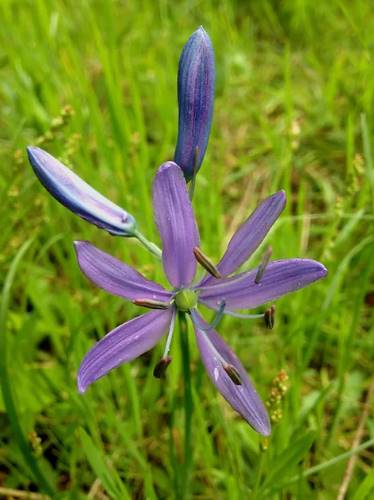
- Species Code: CAQU
- Habit: Perennial monocot forb reaching 20 to 70 cm tall, flowering stalk taller than leaves.
- Leaves: Linear, lanceolate leaves with parallel veins, growing from the plant base from a long-lived bulb.
- Stems: Range from 4 to 28 inches (0.71 m) tall, and generally more slender and shorter than C. leichtlinii.
- Flowers: A dense cluster of blossoms grows along the main stalk, each attached by a short stem at different heights. Flowers of six tepals are a dramatic pale to deep blue colour, and 3 to 5 cm across. Where flower pedicels connect to the main stem, long green bracts are present. Tepals are not fully symmetrical, radiating unequally from the flower’s centre. The lowest petal points downward, while the other five spread upward and outward around the flower’s reproductive parts. The corolla withers separately in a messy way around the developing ovary. Each flower has six bright yellow stamens and anthers.
- Fruits: Short, fat capsules with shimmering black seeds. When mature, Camassia quamash dries and darkens and capsules remain pressed close to the main senesced scape. As one walks through a spent population, dried capsules and many loose seeds let off a dry, snake-like rattle. The tops of the capsules open at maturity, revealing black, shiny, tear-shaped seeds, which can be dropped or harvested.
- Ecology: FACW, Facultative Wetland Plant (hydrophyte), found in wet prairies or forested wetlands. Usually found in slightly wetter areas than Camassia leichtlinii.
Dichelostemma congested – Ookow
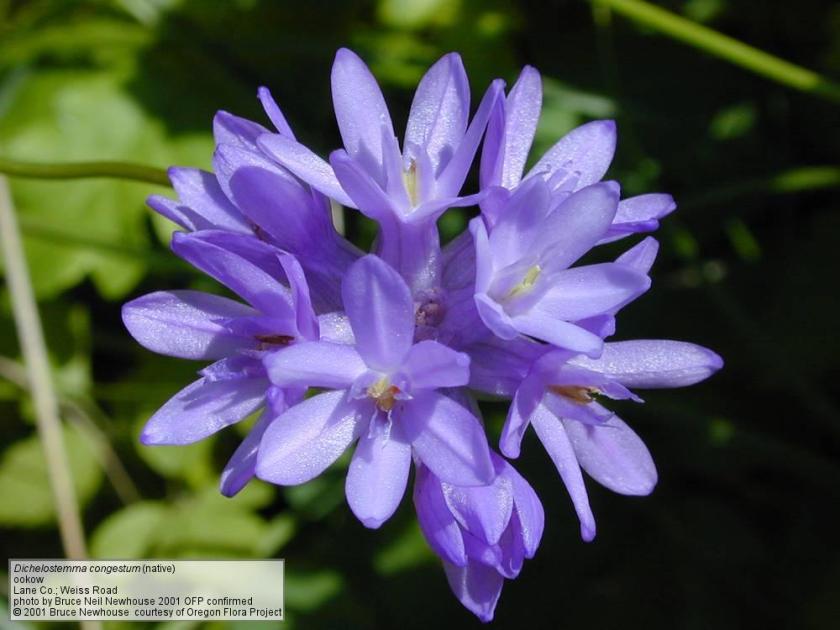
Triteleia hyacinthine – Fool’s Onion
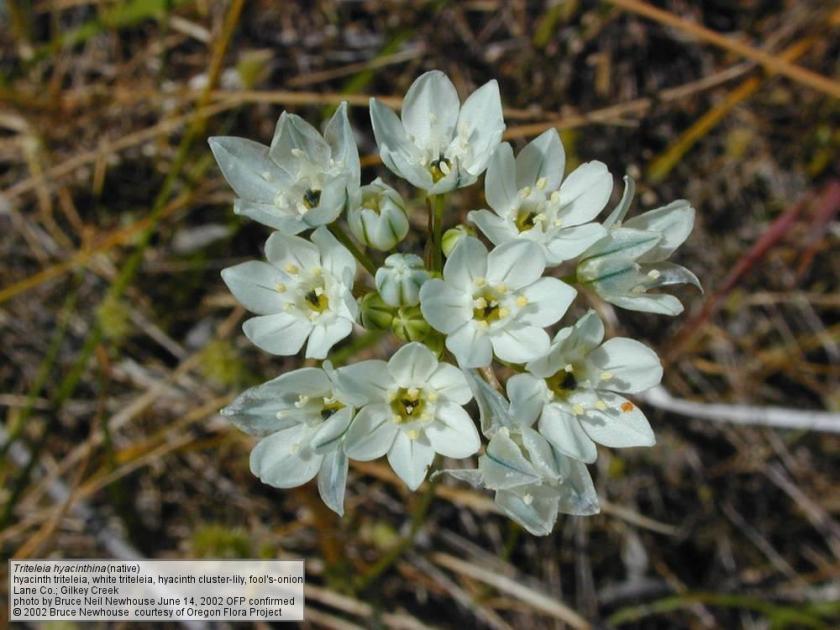
FAQs About Asparagaceae Family Plants
This article was written by:
Reference sources:
Simpson, M., Plant Systematics, 2nd ed. Academic Press, Burlington, MA. 2010.
USDA Plants Database: <https://plants.usda.gov/core/profile?symbol=CAQU>
City of Eugene, Parks Seed Collection Manual, Camassia quamash, 2009.
City of Eugene, Parks Seed Collection Manual, Brodiaea elegans, 2009.
USDA Plants Database: <https://plants.usda.gov/core/profile?symbol=BRELE>

